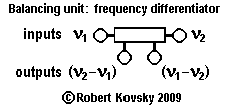

| See: Shimmering Silences in Beautiful Music. |
Timing Devices: the original presentation of the timing devices system. The message is that brains are not computers.
Quad Nets: general designs for brain-like devices; timing devices are a special class of devices within the more general class, which has a farther reach.
Embodiment of Freedom: integrated models - based on Quad Nets - of brains and experience, physics and psychology.
Testimony of Freedom: re-states prior models and extends the inquiry into social and spiritual matters.